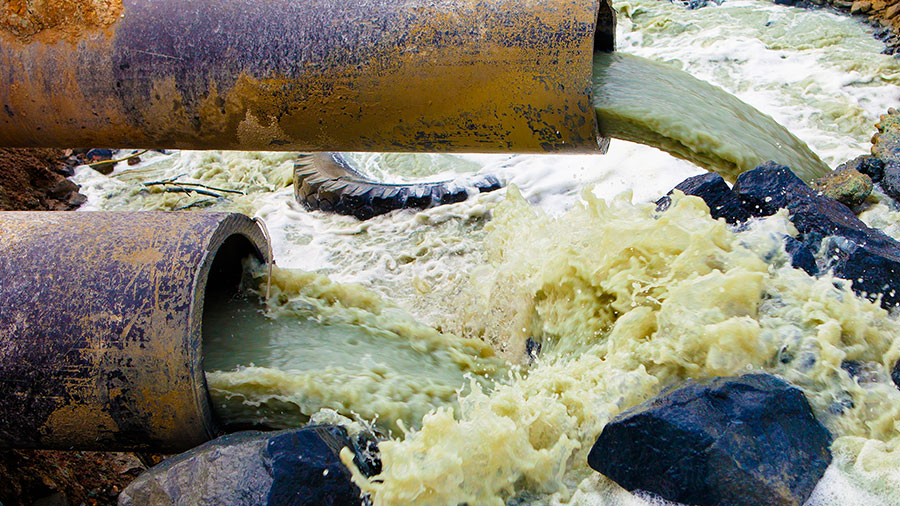Industrial Wastewater Treatment: Advanced Techniques for Effective Monitoring
Industrial Wastewater Treatment: Advanced Techniques for Effective Monitoring
Blog Article
Exactly How Liquid Garbage Disposal Works: An In-depth Summary of Strategies and Technologies Employed

Overview of Fluid Waste Kind
The intricacy of fluid waste types demands a complete understanding of their features and implications for disposal. Liquid waste can extensively be classified right into a number of types, consisting of industrial, community, agricultural, and hazardous waste. Each group displays distinct properties, calling for details monitoring approaches to mitigate environmental and health and wellness threats.
Industrial fluid waste originates from producing processes and frequently contains a variety of pollutants, such as heavy metals, solvents, and natural compounds. Metropolitan liquid waste, mostly consisting of wastewater from families and commercial facilities, has raw material, nutrients, and virus (industrial wastewater treatment). Agricultural fluid waste, consisting of runoff from ranches, might have plant foods, chemicals, and pet waste, presenting threats to water quality and ecological communities
Dangerous fluid waste is defined by its poisoning, sensitivity, or possible to cause damage. Understanding these varied liquid waste types is important for establishing efficient disposal techniques and making certain conformity with environmental guidelines.
Physical Therapy Methods
Screening is the first action, where bigger particles and particles are eliminated from the liquid waste utilizing screens or grates. In sedimentation storage tanks, heavier particles clear up at the base, creating a sludge layer, while the clarified fluid can be further treated.
Purification is one more crucial technique that entails passing the fluid through porous products, such as sand or membrane layers, to capture smaller particles. This action improves the top quality of the fluid, making it suitable for subsequent treatment processes.

Chemical Therapy Techniques
Chemical treatment methods are important for successfully handling fluid waste, specifically in resolving liquified and colloidal pollutants that physical methods might not sufficiently eliminate. These strategies make use of numerous chemical representatives to counteract, precipitate, or transform dangerous materials into much less dangerous types.
One usual method is coagulation and flocculation, where chemicals such as alum or ferric chloride are included in promote the gathering of suspended particles. This procedure improves sedimentation, permitting easier removal of the resulting sludge. Additionally, oxidation processes, employing representatives like chlorine or ozone, are used to break down intricate natural substances and pathogens, rendering the waste more secure for discharge or further treatment.
Neutralization is another vital method, which changes the pH of acidic or alkaline waste streams to neutral levels, preventing potential injury to downstream systems and the atmosphere. Furthermore, progressed oxidation processes (AOPs) utilize mixes of oxidants and ultraviolet light to deteriorate consistent contaminants, achieving a greater level of treatment effectiveness.
Organic Treatment Procedures
Organic therapy processes play a vital duty in the management of fluid waste by utilizing bacteria to break down natural matter and lower contaminant levels. These processes can be generally categorized into cardiovascular and anaerobic therapies, each employing specific microbial neighborhoods to achieve efficient waste deterioration.
Aerobic treatment involves using oxygen to help with the break down of natural materials by microorganisms. This procedure is typically executed in activated sludge systems, where aeration tanks give a helpful atmosphere for microbial growth, causing the oxidation of natural contaminants. The resultant biomass can be separated from treated effluent via sedimentation.
On the other hand, anaerobic therapy takes place in the absence of oxygen, relying upon different germs to break down raw material. This approach is especially advantageous for high-strength waste, as it generates biogas, a renewable resource resource, while decreasing sludge manufacturing. Technologies such as anaerobic digesters are often employed in community and industrial applications.
Both cardiovascular and anaerobic biological therapies not only decrease the environmental influence of liquid waste but likewise assist in source recovery, making them crucial parts of sustainable waste management methods. Their performance, performance, and adaptability sustain their prevalent application throughout different industries.
Emerging Technologies in Disposal
Ingenious techniques to liquid waste disposal are rapidly evolving, driven by improvements in modern technology and a raising emphasis on sustainability. Amongst these emerging innovations, membrane layer bioreactors (MBRs) have gotten traction for their capacity to combine biological treatment with membrane filtering, resulting in top quality effluent that can be reused in different applications. MBRs make it possible for smaller footprints and a lot more reliable procedures contrasted to traditional systems.
One more appealing development is the usage of anaerobic digestion incorporated with nutrient recuperation innovations, which browse around this site not only deals with fluid waste however additionally produces biogas and recovers useful nutrients like nitrogen and phosphorus. This double benefit boosts resource performance and minimizes environmental impact.
Furthermore, progressed oxidation procedures (AOPs) are being adopted for the degradation of complex natural pollutants. These techniques utilize powerful oxidants and drivers to damage down pollutants at the molecular degree, supplying a highly reliable option for challenging waste streams.
Furthermore, the integration of artificial knowledge and artificial intelligence why not look here in waste monitoring systems is optimizing operational performance and anticipating maintenance, leading to lowered expenses and improved ecological compliance. These technologies mirror a considerable shift in the direction of even more efficient and lasting liquid waste disposal methods.
Conclusion
In final thought, reliable fluid waste disposal necessitates a detailed understanding of numerous techniques and innovations. By continually progressing these methodologies, it ends up being feasible to resolve the growing challenges connected with fluid waste, inevitably adding to environmental protection and resource healing.
Fluid waste disposal is an important aspect of environmental administration, needing a thorough understanding of various techniques and technologies tailored to different waste kinds. Fluid waste can generally be classified right into numerous kinds, consisting of commercial, metropolitan, browse around these guys farming, and unsafe waste. Agricultural fluid waste, consisting of drainage from ranches, might have plant foods, chemicals, and animal waste, positioning dangers to water high quality and environments.
Different physical treatment methods play a crucial role in managing liquid waste properly - industrial wastewater treatment.In verdict, reliable fluid waste disposal requires an extensive understanding of various strategies and modern technologies
Report this page